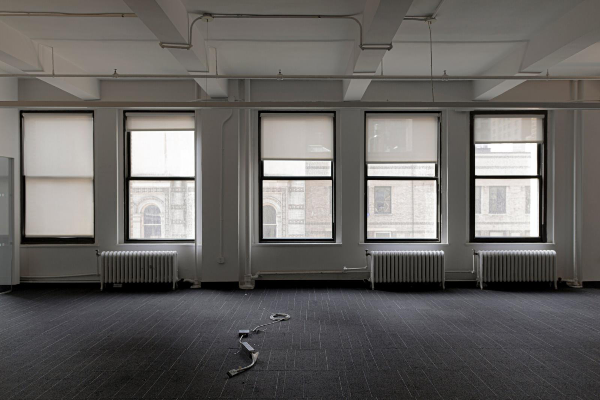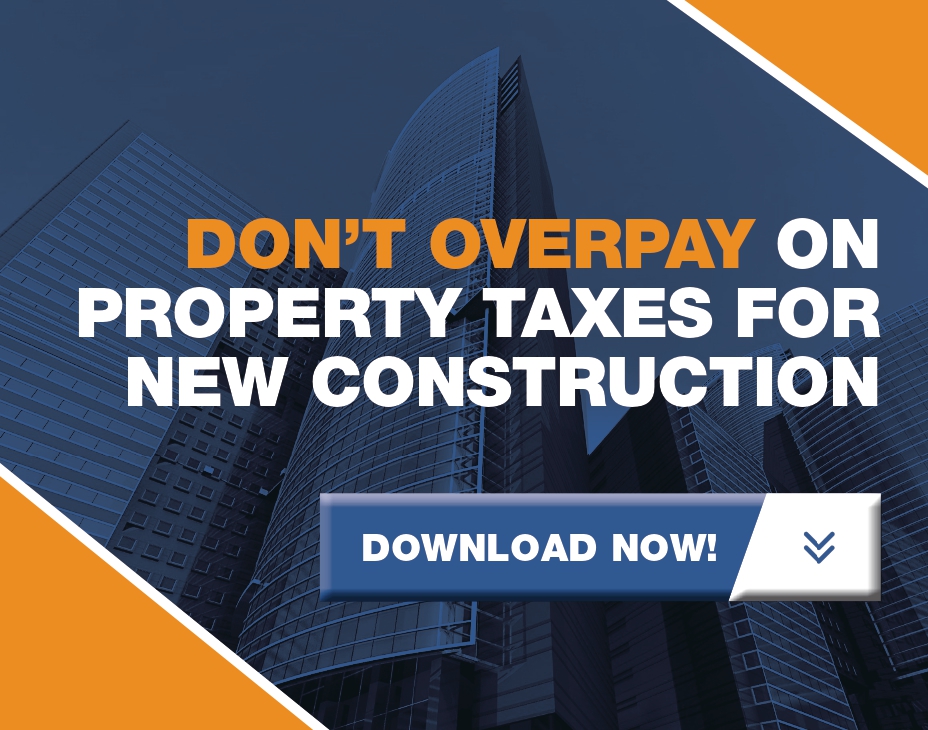After years of uncertainty, the U.S. office market is showing clear signs of stabilization in 2025. A flight to quality, coupled with a rebound in leasing and investment, is painting a cautiously optimistic picture for the future. However, for many commercial property owners, the good news is tempered by a harsh reality: property tax assessments are failing to keep pace with the market's dramatic shifts, leaving many to foot an unfairly large bill.
The commercial real estate landscape has undergone a seismic transformation since the pandemic. While headlines have focused on the challenges facing the office sector, a more nuanced story is emerging. The market isn't collapsing—it's bifurcating. Premium properties in desirable locations are thriving, while older, less-competitive buildings are struggling to find their footing. This divergence has created both opportunities and challenges for property owners, particularly when it comes to managing their tax obligations.

Caption: Modern downtown office buildings represent the commercial real estate sector experiencing market stabilization in 2025. Credit: Source
A Market in Transition: The Flight to Quality
The post-pandemic world has irrevocably altered the office landscape. Hybrid work models are no longer a temporary experiment but a permanent fixture, leading many companies to rethink their real estate footprint. This has given rise to a pronounced "flight to quality," where tenants are abandoning older, less-desirable buildings in favor of modern, amenity-rich properties in prime locations.
This trend is borne out by recent data. Class A properties, despite representing only a third of total inventory, captured 52% of all leasing volume in the third quarter of 2025 2. This demand for premium space is driving a recovery in the top tier of the market, with global office leasing for the first nine months of 2025 reaching its highest level since 2019 1. In a sign of renewed confidence, New York's Midtown has largely returned to pre-pandemic rent levels, and even the hard-hit San Francisco market is showing early signs of a turnaround 4.
The implications of this shift are profound. Companies are no longer simply looking for square footage—they're seeking spaces that support collaboration, attract talent, and reflect their brand values. Buildings with modern HVAC systems, outdoor spaces, fitness centers, and flexible floor plans are commanding premium rents, while older properties with outdated infrastructure are struggling to compete.
Investment and Leasing Rebound
Investor sentiment is also on the upswing. Direct investment in commercial real estate reached $213 billion in the third quarter of 2025, a 17% year-over-year increase, with the Americas leading the charge with a 26% jump in transaction activity 1. This renewed confidence is further evidenced by a 21.8% year-over-year decline in sublease availability, indicating that more companies are committing to their office space 2.
Cross-border investment has also recovered despite ongoing geopolitical pressures, with third-quarter growth of 7% year-over-year and year-to-date volumes up 26% 1. This suggests that international investors are viewing the U.S. office market as increasingly attractive, particularly for high-quality assets in gateway cities.
While the market is showing positive signs, it's not a uniform recovery. The national office vacancy rate, while stabilizing, remains elevated at 20.5% 2. However, net absorption, a key indicator of demand, turned positive in the third quarter of 2025 for the first time since late 2024, marking the best quarterly performance since 2019 2. Leasing volume reached 56 million square feet, up 5% from the previous year 2.
Regional Variations: Where the Market Is Strongest
The recovery isn't playing out evenly across the country. Markets in the East and South regions have led the gains, with cities like Manhattan, Dallas, and Austin recording renewed momentum 2. These markets benefit from strong employment growth, particularly in sectors like education, healthcare, and government, which are bolstering underlying demand for office space.
Meanwhile, some Sun Belt markets that experienced rapid growth during the pandemic are now facing headwinds as supply catches up with demand. The key differentiator continues to be quality—even in challenging markets, well-located, modern buildings are outperforming their older counterparts.
Construction pipelines have also contracted significantly, which should help support fundamentals in the medium term. In the United States, groundbreakings have fallen to a record low, with three-quarters of the remaining pipeline already pre-leased 1. In Europe, new construction starts are at their lowest level in over a decade 1. This constrained supply should help absorb excess inventory and support rent growth for high-quality properties.

Caption: Vacant office space has reached historic highs, but recent data shows the market may be turning a corner. Credit: The New York Times
The Property Tax Disconnect
While the top end of the office market is recovering, many owners of older, less-desirable properties are facing a different reality. These buildings are struggling to attract tenants, leading to high vacancy rates and plummeting values. In Philadelphia, for example, the total value of large office buildings has fallen by nearly 30% since 2019, and some properties have sold for a fraction of their previous worth 3.
The twenty-nine-story tower at 2000 Market Street, which sold for more than $107 million in 2018, sold in the summer of 2025 for just $45.5 million 3. Similarly, the building at 1801 Market Street sold for $30 million after last being valued at $75 million in 2006—equivalent to about $144 million in today's dollars 3. These aren't isolated incidents. Approximately one in ten large buildings in Philadelphia has lost at least a quarter of its value 3.
This is where the property tax disconnect comes in. Property tax assessments are often slow to react to rapid market changes. County assessors typically rely on data that can be one to three years old, and in some jurisdictions, properties are only reassessed every few years. As a result, many owners of struggling office buildings are being taxed based on outdated, inflated values. This can have a devastating impact on their bottom line, especially when they are already grappling with high vacancy rates and declining rental income.
The impact extends beyond individual property owners. Declining office values are also affecting municipal budgets. Cities that rely heavily on property tax revenue from commercial buildings are facing budget shortfalls as assessments begin to catch up with market reality. This creates a challenging dynamic where cities are reluctant to lower assessments, even as property owners are struggling to stay afloat.
What This Means for Property Owners
For property owners, the current environment presents both challenges and opportunities. Those who own high-quality, well-located properties are likely to see continued strength in their markets. However, owners of older or less-competitive buildings need to be proactive in managing their costs, and property taxes represent one of the largest controllable expenses.
The key is to ensure that your property's assessed value reflects its current market value, not what it might have been worth several years ago. This is particularly important in markets where office values have declined significantly. If your property is being taxed based on an inflated assessment, you're essentially subsidizing the city at your own expense.
The Path Forward: Appealing Your Assessment
For property owners who believe their assessments are out of line with the current market reality, the solution is to file a property tax appeal. The appeals process is designed to ensure that taxpayers are not shouldering an unfair burden. As more properties sell at steep discounts, assessment appeals are becoming increasingly successful.
While the process can seem daunting, the potential savings can be substantial. In Philadelphia, roughly one in five commercial properties has filed an appeal in the past year 3. Property owners who are considering an appeal should start by gathering evidence to support their case, including recent sales of comparable properties, independent appraisals, and data on vacancy rates and rental income.
The most compelling evidence in an assessment appeal is typically recent sales data. If comparable properties in your market have sold for significantly less than their assessed values, this provides strong support for a reduction in your assessment. Professional appraisals can also be valuable, particularly if they demonstrate that your property's income-generating potential has declined due to higher vacancy rates or lower rental rates.
Looking Ahead: What to Expect in 2026
The outlook for 2026 is cautiously optimistic. Most analysts expect continued growth in office leasing, supported by higher utilization targets, reduced downsizing rates, and continued flight to quality 1. However, the market is likely to remain bifurcated, with premium properties continuing to outperform.
For property tax purposes, this means that owners of older, less-competitive buildings should remain vigilant about their assessments. As more sales data becomes available showing the divergence between Class A and Class B/C properties, there will be increasing opportunities to successfully appeal inflated assessments.
Property owners should also be aware that the window for filing appeals is typically limited. Most jurisdictions have strict deadlines, and missing these deadlines can mean waiting another year for relief. Working with experienced property tax professionals can help ensure that you don't miss critical filing dates and that your appeal is supported by the strongest possible evidence.
Key Takeaways for Commercial Property Owners
The U.S. office market is at an inflection point. While the headlines focus on vacancy rates and distressed properties, a more nuanced picture is emerging. High-quality properties in strong markets are thriving, investment activity is rebounding, and leasing volumes are at their highest levels in six years. However, this recovery is uneven, and many property owners—particularly those with older buildings—are facing significant challenges.
Property taxes represent one of the largest expenses for commercial property owners, and in a market where values have declined significantly, it's critical to ensure that your assessment reflects current market conditions. The appeals process exists precisely for this purpose, and with the right evidence and approach, many property owners are finding substantial relief.
As we move into 2026, the office market will continue to evolve. The flight to quality shows no signs of abating, and the gap between premium and secondary properties is likely to widen. For property owners, staying informed about market trends and being proactive about managing costs—including property taxes—will be essential to navigating this new landscape successfully.
.png)


.png?width=170&height=64&name=Logo%20320x120(2).png)





